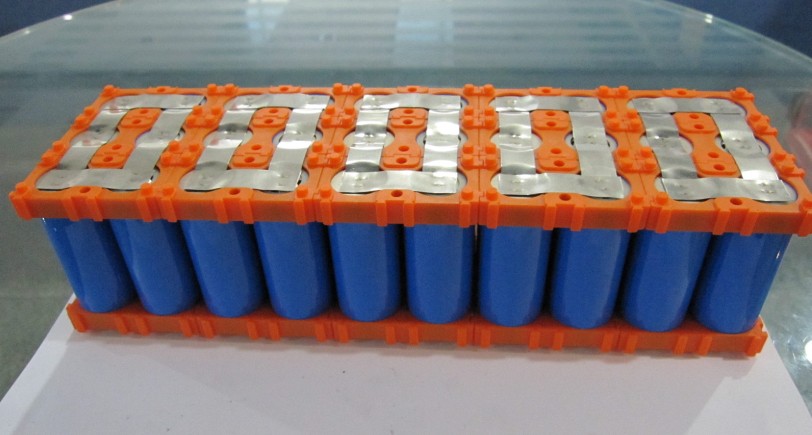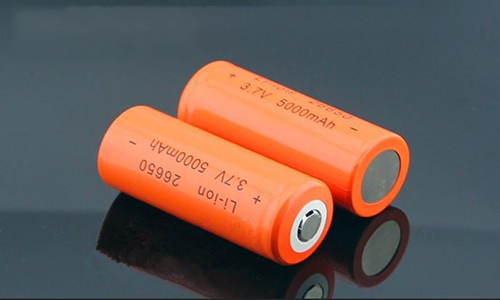Lithium Ion Battery Degradation Mechanisms-Science Magic
Sep 05, 2019 Pageview:1291
Lithium-ion batteries are characterized by higher gravimetric and volumetric energy density and are one of the most well-known and ever-evolving energy storage technologies. They are also well known, especially for their mobile applications. However, the limited life of lithium-ion batteries prevents their prolonged use in applications requiring fixed energy storage. To allow wider penetration of the lithium-ion battery market, there is a need for a detailed understanding of the degradation mechanisms. A typical lithium-ion battery consists of active material, a binder, a separator, a current collector and an electrolyte. And the interaction which lies between these components does play a crucial role in the proper operation of the batteries. The degradation of lithium-ion batteries can both have a chemical and mechanical origin and can be felt by a loss of capacity, performance degradation or both.
The predictive models for lithium-ion batteries life expectancy must take into account a variety of electrochemical, mechanical and thermal degradation modes that occur with batteries in their application environments. Lithium-ion batteries can also have different degradation trajectories depending on the storage and the cycling history of the environment of use. The degradation rates are controlled by factors like the history of temperature, the electrochemical operating window, and the charge or discharge rate.
Definition of lithium-ion battery degradation mechanisms
Mechanical degradation mechanisms can be described as the volume changes and stresses which are generated by the repeated intercalation of Li ions into an active material, but chemical degradation mechanisms, on the other hand, is associated with the parasitic side reactions like the formation of solid electrolytic interphase, decomposition or reduction of electrolytes and dissolution of the active material.
Most battery problems are majorly a chemical problem. In a normal or healthy battery, the ion flow is constantly between the cathode and the anode. Charging the battery forces the ions from the cathode ions toward the anode, however, this flow is reversed when the battery is being used.
As time goes on, the process wears out the cathode, resulting in a reduction in its capacity. A high-end lithium-polymer battery is likely to lose about 20% of its capacity after about 1000 charge cycles. You can also imagine this in another way; for every time you charge your li-ion battery, you shave off a few seconds of its battery life. This degradation can also be quickened if there are erratic charges and heat on the battery.
State of health of the lithium-ion battery
Evaluating the state-of-health (SOH) of lithium-ion batteries is one major challenge faced in the journey to constructing an efficient battery system which boasts optimum performance.
The SOH is a "measure" which reflects the overall condition of a battery and the ability of the battery to deliver the indicated power or performance relative to a new battery. Factors such as charge acceptance, voltage, and self-discharge, internal resistance, etc. are all taken into account when considering the SOH. This is a measure of the battery's long-term capacity and is only a "suggestion", not an absolute measure of the amount of lifetime energy initially in the battery and the amount remaining. If we were to use the automobile analogy, the SOH of a lithium-ion battery can be compared to an "odometer" display function, which is used to indicate the mileage and distance the vehicle has traveled or journeyed since it was new.
During a lithium-ion battery lifetime, the performance or "state of health" of the battery deteriorates progressively due to an irreversible chemical and physical changes which occur over time with usage until the battery can no longer be used.
The state of health of a lithium-ion battery is an indication of the stage or point reached in the life cycle of the battery, so it gives an idea of what is left, or what is to be expected.
Unlike the state of charge (SOC), which may simply be determined by measuring the actual charge of the battery, there may be no absolute definition of a battery’s’ SOH. This is a subjective measure because different people derive their SOH from a variety of performance parameters of the battery and they may interpret it according to their own rules. It is more of an estimate than an actual measurement. This may be correct just as long as the estimate is made based on a set of rules that is consistent and measurable. However, comparison of estimates made with several test equipment and methods may be unreliable.
Consequently, battery manufacturers are not known to provide SOH because the batteries they provide are new. SOH does not apply to batteries until they have started aging or after they have been put into use. Therefore, the SOH definitions are specified by the test equipment manufacturer or by the user.
The scientific solutions of lithium-ion battery degradation
The battery aging problem is quite sensitive to every aspect of a battery pack system. If looked from a cell manufacturer's point of view, improvement and development in cathode compound could improve the battery performance and cycle time, but then, this could be offset by the higher energy density silicon compound anodes which introduce a bigger element of mechanical degradation. Certain alternative chemical processes with a much longer life span are under development, although this currently comes at the expense of the energy density.
The battery design is improving, and it includes knowledge of the optimal thermal management of cells, which is bound to have a significant effect on the lifetime of the batteries. However, the biggest challenge could be the battery management system, this is because it must provide the required power and performance to ensure the maximum possible battery life for a particular cell. However, good progress has been made in that regard, and with user-defined charging profiles too, in other to avoid lithium plating, temperature compensation in operating strategies and an intelligent charge time to reduce the state of charge.
However, no solution has currently been found to guarantee an acceptable battery life in all conditions. It can be achieved only through a combination of additional enhancements to cell designs, battery-pack improvement, and battery usage optimization, as well as an understanding of the basic aging mechanisms of cell chemistries that are emerging.
- Prev Article: Li Ion Mobile Battery-What You Tend to Use Day and Night
- Next Article: Lithium ion battery demand-What you need to do
Leave Message
Hottest Categories
-
Hottest Industry News
-
Latest Industry News











